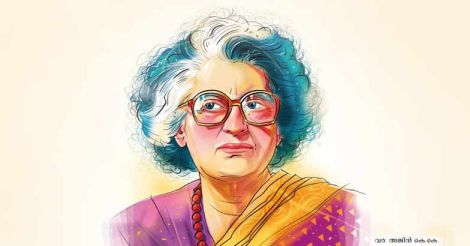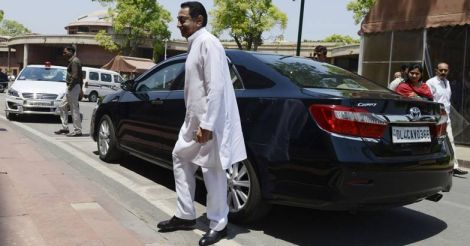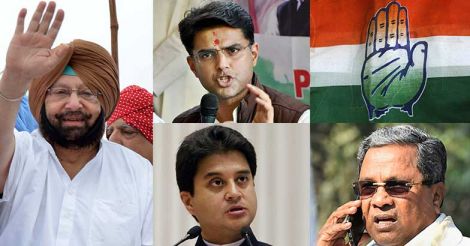Irrespective of the outcome of the Karnataka elections and notwithstanding chief minister Siddaramaiah's desire to retire after the polls, a feature of the contest in the southern state is his emergence as a major state-level leader.
As a result, the battle is being perceived as being mainly between Siddaramaiah and Narendra Modi if only because the Bharatiya Janata Party (BJP) chief ministerial candidate, B S Yeddyurappa, has been almost completely overshadowed by the prime minister's intensive campaign since May 1.
In contrast, Siddaramaiah has kept pace with Congress president Rahul Gandhi's electioneering with both public appearances and a regular recourse to tweets which are characterised by humour as well as biting sarcasm.
For the Congress, this rise of a regional leader marks a return to the immediate post-1947 period when the party had a number of top-ranking local leaders despite the presence of towering personalities at the Centre like Jawaharlal Nehru, Maulana Abul Kalam Azad and others.
The co-existence of influential leaders at both the Centre and in the states gave way in Indira Gandhi's time to a concentration of power in Delhi with the regional leaders being reduced to mere supplicants rather than representing considerable authority as, for instance, B C Roy once did in West Bengal or Pratap Singh Kairon in Punjab or Govind Ballabh Pant in Uttar Pradesh or Morarji Desai in Bombay.
 The co-existence of influential leaders at both the Centre and in the states gave way in Indira Gandhi's time to a concentration of power in Delhi.
The co-existence of influential leaders at both the Centre and in the states gave way in Indira Gandhi's time to a concentration of power in Delhi.The reason for the marginalisation of the regional leaders was largely ascribed to Indira Gandhi's disinclination to allow any charismatic local Congressman to acquire a sizeable base in his home province and become a rival centre of power.
The diminution of the stature of local leaders was accompanied by the increasing dominance of the party's first family, which reached its highest point during the Emergency when Indira was deemed synonymous with India by then Congress president D K Barooah.
Arguably, this pattern of politics with only one focal point has begun to change in the Congress. The first sign of this transformation was in Punjab last year where Amrinder Singh emerged as the No.1 figure both before and after the party's electoral success. That he did so despite having once made disparaging remarks about Rahul Gandhi showed how the "high command" had matured since Indira Gandhi's time or had come to terms with its own diminishing status.
Now, the battle in Karnataka has given an opportunity to Siddaramaiah to acquire a stature similar to Amrinder Singh's. Moreover, there is no tension this time between Delhi and Bengaluru as in Punjab earlier when there was even speculation about Amrinder Singh leaving the Congress.
It will be futile to deny that the increasing visibility of the state-level leaders is related to the dimming of the dynasty's aura. At the same time, the BJP's ascendency has apparently made the Congress realise that the earlier style of politics with a concentration of power at the Centre will not work.
Just as the Congress is trying to change the perception of being a "Muslim party", to use Sonia Gandhi's words, it is also becoming accustomed to the idea of giving a free hand to the local satraps. The leeway given to Amrinder Singh was the first step and now it is Siddaramaiah's turn to operate as he pleases.
It goes without saying that this new approach will do a world of good to the party. Fortunately, it has in Sachin Pilot and Jyotiraditya Scindia young, personable and energetic leaders in Rajasthan and Madhya Pradesh who are capable of delivering the goods in the assembly elections later this year.
It is the Congress's misfortune that several prominent state leaders like Y S Rajshekara Reddy, Madhavrao Scindia and Rajesh Pilot died early. Otherwise, the process of a more even distribution of power between the Centre and the states might have begun earlier.
At the moment, the party is trying to evolve a balance between the younger generation and the elderly leaders if only to make the handing over of the baton a smooth affair. Nowhere is this effort more evident than in Madhya Pradesh where the party has always had more than a normal share of heavyweights.
Thus, the 71-year-old Kamal Nath, who was once close to Sanjay Gandhi, has been nominated as the party's chief in the state while 47-year-old Scindia has become the head of the campaign committee. What this balancing act means is that the question of who will become the chief minister in case the Congress wins has been left open.
 Kamal Nath, who was once close to Sanjay Gandhi, has been nominated as the party's chief in the state.
Kamal Nath, who was once close to Sanjay Gandhi, has been nominated as the party's chief in the state.It is the same in Rajasthan since the former chief minister, 68-year-old Ashok Gehlot, has been elevated to the position of a general secretary of the All India Congress Committee (AICC) in charge of the organisation and the training of cadres while the 51-year-old Sachin Pilot remains the chief of the party's state unit.
There is little doubt, however, that the generational shift evident in Rahul Gandhi's ascent to the Congress president's post is paving the way for the younger leaders to gain more prominence. But it remains to be seen whether their rise will put an end to the unequal relations as in Indira Gandhi's time between the high command and the state units.
(Amulya Ganguli is a political analyst. The views are personal.)

























 Captain Amarinder Singh, Sachin Pilot, Siddaramaiah and Jyotiraditya Scindia are among the prominent regional leader of the Congress.
Captain Amarinder Singh, Sachin Pilot, Siddaramaiah and Jyotiraditya Scindia are among the prominent regional leader of the Congress.